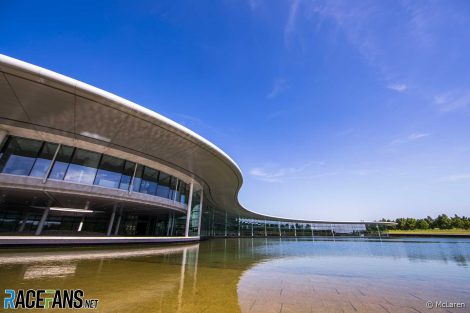The huge volumes of water which forced the cancellation of this weekend’s Emilia-Romagna Grand Prix are now receding.
But Formula 1 undoubtedly made the correct decision to call the race off two days ago as floodwater encroached on the Imola circuit and forced its personnel to evacuate the paddock.
In an average May, the Emilia-Romagna region sees around 60mm of rainfall in total. But this week one town in the area saw 110mm in a single day. In the surrounding hills daily figures of over 200mm were seen as the vast storm Minerva deposited its contents and spread misery across the region.
Over 20 rivers burst their banks, including the Santerno which flows alongside Imola’s Autodromo Enzo e Dino Ferrari, where this weekend’s race was supposed to take place. Around 20,000 people have been forced to flee their homes and at least 13 are reported to have died. The regional president of Emilia-Romagna, Stefano Bonaccini, described the rainfall as a “catastrophic event that has never been registered before.”
@lineagoticafight Santa Sofia (FC) 17 maggio 2023 ore 7.40 #santasofia #meteo #allertameteo #romagna #emiliaromagna #fiumebidente #pioggia
A storm of this size is rare to begin with. But this was the second of its kind the region has experienced in the past month. Members of the AlphaTauri team, which is based in the Emilia-Romagna town of Faenza, were affected by the storms on both occasions.
Whether climate change was responsible for the flooding which forced the cancellation of this weekend’s Emilia-Romagna Grand Prix is a question experts in the field will have the final say on. But the scale of the rainfall which has hit the region in recent weeks has all the hallmarks of the increasingly extreme weather events climate scientists have long warned will be the consequence of rising global heating.
F1 faced a comparable situation two years ago when record-breaking downpours occured across Germany and Belgium which coincided with that year’s grand prix at Spa-Francorchamps. The race was not called off, but it might as well have been, as constant heavy rain meant the F1 drivers could only trundle around behind the Safety Car for a handful of laps before proceedings were halted.
Subsequent analysis concluded rainfall of such intensity only happens in that part of the world once every 400 years. More significantly, it also determined that the rising heat of the planet made such downpours potentially nine times more likely that they had been a century ago.
Advert | Become a RaceFans supporter and
Already similar descriptions are being applied to the Emilia-Romagna flood. Pierluigi Randi, president of the Associazione Meteo Professionisti told La Repubblica such a downpour had “never [occurred] like this in a century and, above all, never three extreme events so close. The situation is really worrying for the future.”

Formula 1 is, of course, neither wholly responsible for nor solely at risk from climate change. But the series increasingly has to confront the reality of it, along with the rest of us.
In 2019 F1 announced its first sustainability strategy and set a target of becoming a ‘net zero’ emitter of carbon by 2030. Its efforts to reach this goal go beyond its loudly-trumpeted plans to introduce what it calls ‘fully sustainable’ synthetic fuel when its new power unit formula arrives in three years’ time, or slow progress in streamlining its globe-crossing calendar.
Two of the smaller changes the sport is making in pursuit of its goal were due for introduction this weekend. These were its ‘Alternative Tyre Allocation’, intended to reduce the amount of rubber used per race weekend, and the debut of a new wet weather tyre which can be used without a heating blanket, reducing the amount of equipment and energy needed.
These changes are welcome and arguably more impactful than they may seem at first. For example if the ATA proved successful and was used across every race weekend then Pirelli could produce 3,680 fewer F1 tyres per year. But this is still small compared to F1’s entire environmental impact – never mind the rest of the world.
While the improvements F1 is making – however minor – should not be dismissed, the urgent need to do more and sooner cannot be overlooked either. Some in the sport are already speaking up for this.

F1 and the wider motorsport world is especially vulnerable to the questions raced by climate change not merely because of the contribution it makes to global emissions but because its very nature means it will always be seen as one of the most egregious consumers of resources.
As climate events such as this become more frequent and more severe, public opposition to the use of resources for ‘cars going around in circles’ will become stronger unless F1 can demonstrate it is part of the solution rather than a cause of the problem.
But in a week which saw the first cancellation of a grand prix due to climate change on the same day the UK Met Office warned the world is likely to exceed the milestone 1.5C increase in temperatures within the next five years, it’s not just F1’s efforts to address the problem which feel like too little, too late.
Advert | Become a RaceFans supporter and
















